|
|
 |
|
February 24, 2020
Wine Review Online reader Mike McGowan recently sent me a nice note indicating that he’d benefitted from a column I posted a while back, including four of the wines in his catering offerings from Artemis Foods in Portland. The column was a rundown of some top choices from an insane selection process that I conduct every year for the Clyde’s Restaurant Group in Washington, D.C., and Mike asked if another set of winners might be published soon.
Last year, I tasted more than 3,000 wines during the first quarter of the year for this program, which is a pretty heavy lift. But then, the Clyde’s Group sells nearly $15 million in wine annually, so, in that context, that 3,000+ number is somewhat less insane than it first appears. In any case, I’ve already cut through more than 1,700 sparkers and reds during 2020, and am cringing in anticipation of delivery this week of the white and rosé entries.
So, Mike, here you go with a few for starters, and hopefully some other readers will also be glad to see some outstanding and affordable wines during income tax season. Each of the wines appearing below won its placement after competing against dozens and dozens of contenders in my preliminary round tastings, as well as a blind tasting conducted by 40 employees of the Clyde’s Group (which includes the Old Ebbitt Grill and The Hamilton, which rank as the #5 and #16 highest revenue earning restaurants in the entire USA).
By the way, that final round blind tasting involved each wine flight being shown with food, so these can be counted on whether you’re trying them table-side or just for sipping during tax season:
Prosecco Brut, Tenuta Sant’Anna, Veneto, Italy, NV ($15): This wine beat the daylights out of dozens of other Prosecco bottlings in my recent tastings, and hundreds (that’s right—hundreds) of other sparklers priced below $12 retail. Delicate, classy floral aromas lead to fresh flavors in this 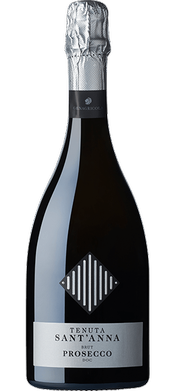 wine, recalling white peaches, with energetic but fine-grained effervescence. Tenuta Sant’Anna also makes an excellent Extra Dry Prosecco at this same price, and at this cost level, that sweeter style often covers minor flaws and makes for a stronger performance. However, the Brut is so good that no cosmetic sugar is needed, and this was my pick of the two. Our source for this in the mid-Atlantic region is Lanterna. You might not choose this if The Queen stops by, but for having more bubbles in your life to celebrate life’s smaller-caliber, everyday victories, you can’t beat this. 92 wine, recalling white peaches, with energetic but fine-grained effervescence. Tenuta Sant’Anna also makes an excellent Extra Dry Prosecco at this same price, and at this cost level, that sweeter style often covers minor flaws and makes for a stronger performance. However, the Brut is so good that no cosmetic sugar is needed, and this was my pick of the two. Our source for this in the mid-Atlantic region is Lanterna. You might not choose this if The Queen stops by, but for having more bubbles in your life to celebrate life’s smaller-caliber, everyday victories, you can’t beat this. 92
Chianti, Morli Neri, Tuscany, Italy, 2018 ($11, imported by Siema): Few wine types are as versatile and useful for weeknight enjoyment with dinner than Chianti, with fresh acidity helping it work with fish or white meats (or pasta, obviously), as well as savory notes that help with work with more robust fare. This rendition displays fruit flavors recalling plums and dried cherries, along with intriguingly earthy undertones. It isn’t too pushy in any respect to cause trouble for anything on your dinner table, but neither is it simple nor innocuous. Well done! 90
Toscana Rosso, Poggio Badiola, Tuscany, Italy, 2016 ($12, imported by Palm Bay International): A relatively affordable but still striking example of the “Super Tuscan” category, this is a blend of 65% Sangiovese, 30% Merlot and 5% Petit Verdot. The bright Sangiovese flavors meld perfectly with darker plum tones from Merlot and the even darker notes derived from the Petit Verdot component, yet all of these tones are in tune. That’s no doubt due to skillful winemaking, but also to the beautifully harmonious character of the 2016 vintage in northern Italy. This is amazingly good…period…but especially in relation to its price. 93
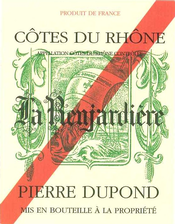 Côtes du Rhône, La Renjardière, Rhône Valley, France, 2017 ($19, imported by Cape Classics): This superb wine is an offering within a set of new imports from Cape Classics, which has long specialized in wines from South Africa but is now working with French wines as well. The blend is Grenache 50%, Syrah 40% and a final 10% comprised of Mourvèdre and Cinsault. 2017 was a fairly hot year in the Southern Rhône, and this wine really benefitted from all that Syrah as well as the especially late-ripening Mourvèdre. It is a terrific Rhône perfectly poised between fresh fruitiness and subtly savory notes, with a long, soft finish. Cape Classics is working pretty aggressively to establish these new imports to the USA, so you might be able to beat the $19 price indicated here, but even if you can’t, you’ll still be getting a great value. 93 Côtes du Rhône, La Renjardière, Rhône Valley, France, 2017 ($19, imported by Cape Classics): This superb wine is an offering within a set of new imports from Cape Classics, which has long specialized in wines from South Africa but is now working with French wines as well. The blend is Grenache 50%, Syrah 40% and a final 10% comprised of Mourvèdre and Cinsault. 2017 was a fairly hot year in the Southern Rhône, and this wine really benefitted from all that Syrah as well as the especially late-ripening Mourvèdre. It is a terrific Rhône perfectly poised between fresh fruitiness and subtly savory notes, with a long, soft finish. Cape Classics is working pretty aggressively to establish these new imports to the USA, so you might be able to beat the $19 price indicated here, but even if you can’t, you’ll still be getting a great value. 93
Malbec Reserve, Domaine Bousquet, Tupungato, Mendoza, Argentina, 2018 ($15, imported by 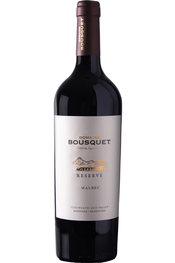 WISD from Miami; distributed in many markets by Opici): Domaine Bousquet is making astonishingly strong, high-value reds these days, and everything I tasted from them was a star in its category: The very best sparkler priced under $13 from outside of Europe; fantastic $12 Cabernet and Malbec, and a phenomenal $18 red blend called “Gaia.” With those wines acknowledged, however, the single best value in the lot is this remarkably over-achieving Reserva Malbec, which blows up its competition in its price category on grounds of purity of fruit as well as complexity, which almost never happens (you can get nice, pure Malbec, or you can get more complex examples with oaky spice and toast notes, but getting both in a single wine priced in the mid-teens is almost impossible). This is marvelous Malbec regardless of price, with pure fruit layered over savory and mineral undertones with a lovely saline streak. Damn! 93 WISD from Miami; distributed in many markets by Opici): Domaine Bousquet is making astonishingly strong, high-value reds these days, and everything I tasted from them was a star in its category: The very best sparkler priced under $13 from outside of Europe; fantastic $12 Cabernet and Malbec, and a phenomenal $18 red blend called “Gaia.” With those wines acknowledged, however, the single best value in the lot is this remarkably over-achieving Reserva Malbec, which blows up its competition in its price category on grounds of purity of fruit as well as complexity, which almost never happens (you can get nice, pure Malbec, or you can get more complex examples with oaky spice and toast notes, but getting both in a single wine priced in the mid-teens is almost impossible). This is marvelous Malbec regardless of price, with pure fruit layered over savory and mineral undertones with a lovely saline streak. Damn! 93
Cabernet Sauvignon, Black’s Station, Yolo County, CA, 2018 ($12): I confess that I’ve never been to Yolo County to know how outstanding this may be in its native context, but that’s seems to have little importance, as it is absolutely outstanding in the much broader context of affordable Cabs made in the USA. The category is actually pretty embarrassing, being filled with wines that are either overtly sweet, juked up with cellar tricks like Mega Purple, or smothered in cheap-seeming notes of fake vanilla and oak char from wood chips. Ouch. By (sharp) contrast, this shows lots of natural-seeming, dark-toned muscle in the fruit, firmed in the finish by fine-grained tannins. Pardon my French, but within its category, it brings to mind a description I once heard of Austin within Texas: "A diamond in a goat's ass." (You Texans can fight this out on your own; I'm just using a memorable simile for a critical point about the sad state of inexpensive American Cabs, and to credit this wine by contrast.) A diamond indeed, and not just in this vintage: This is exceptional almost every year, and they make very good Malbec at this price, too. 90
Posted by Michael Franz at 2:29 PM
|
|
February 16, 2020
I started writing about wine more than 25 years ago for The Washington Post, and over this span I have seen my colleagues write again and again—breathlessly—about more than a few “historically great” vintages. Not wishing to seem ridiculous, I’ve tried to avoid swooning over growing seasons that produced striking wines. This has proved to be a sound approach to critical writing about wine, preventing me from having to recant praise for a “best ever” vintage when another, even better one subsequently came around the corner.
But my turn to recant has come, as extensive blind tastings of 2016 vintage Barolo wines in the area last month have convinced me that these wines are even better than their extraordinary 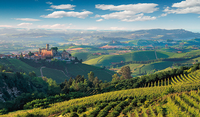 predecessors from 2010. I was once sure that 2010 would be the best year I’d live to see from my beloved Barolo district, and though I’ve definitely not changed my mind about the greatness of the wines made in that year, I confess to having fallen even more deeply in love with the 2016s. predecessors from 2010. I was once sure that 2010 would be the best year I’d live to see from my beloved Barolo district, and though I’ve definitely not changed my mind about the greatness of the wines made in that year, I confess to having fallen even more deeply in love with the 2016s.
Granted, they are not quite as dramatic and “impressive” as the 2010s, which combine acidic freshness, full ripeness, remarkable palate impact and big, tannic structure like no vintage I’ve ever experienced. But with that noted, along with my enduring conviction that I was wise to buy every single bottle from 2010 that I bought…the 2016s are more harmonious, proportional and simply beautiful wines as a group.
I don’t quite know how I’m going to manage to buy as many of the 2016s as their magnificence warrants, but I will find a way. Stated differently, don’t leave your wallet untended in my presence, no matter who you may be--family and friends included--as I'll resort to almost anything to stock up on these wines and assure my happiness over the decades ahead.
I’m fully aware that all this gushing could come back to haunt me if another vintage of this caliber comes along before long, as my opening paragraph shows. Yet, I’m not much concerned about that happening, due the fact that I’m all-too-concerned that climate change in Barolo and Barbaresco simply won’t allow another growing season like 2016 to occur.
To cite a specific fact underlying this concern, the warmest segment of 2016 didn’t witness a single day when temperatures exceeded 35 degrees Centigrade. Based on recent trends, that’s a record that may take a long time to break--if ever--in this rapidly warming region. However, adding in another couple of facts will help 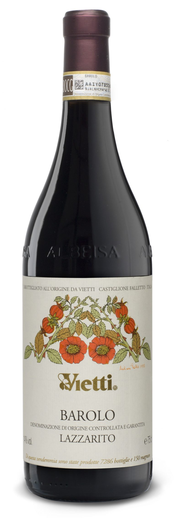 indicate how truly historic 2016 will likely look in retrospect: The Nebbiolo fruit in Barolo and Barbaresco achieved absolutely full ripeness despite the aforementioned lack of heat spikes, as proved by average measured quantities of malic acid below 1 gram per liter. indicate how truly historic 2016 will likely look in retrospect: The Nebbiolo fruit in Barolo and Barbaresco achieved absolutely full ripeness despite the aforementioned lack of heat spikes, as proved by average measured quantities of malic acid below 1 gram per liter.
Add to that the third fact that average alcohol levels were quite moderate despite perfect ripeness, and you could start to believe that the ancient Roman goddess Fortuna blessed this vintage. Could this combination of factors ever recur, or even be surpassed? Sure, anything is possible, in the same sense that it is possible that Wayne Gretzky’s NHL record for hockey assists will be equaled, or that pigs will fly.
How do I love thee, 2016s? Let me count the ways. First, the wines are beautiful to behold, with excellent color at this point in their development, and rarely the slightest hint of any premature brick-ish tint, as with some wines from hot years like 2011.
Second, their bouquets are very expressive as a rule, with lovely floral scents (think violets) but almost never any aromatic suggestion of stewed fruits.
Third, they show generous flavors with a lovely streak of sweetness, but their generosity almost never tips over the line separating stylishness from flamboyance, just as their sweetness never seems candied, as can result when sugars in the grapes soar during heat spikes at harvest time.
Fourth, they hold lots of tannins, but ones that are very fine in grain and almost never overly astringent, even with some still-to-be-absorbed wood tannins still evident in these very young wines. Consequently, they exhibit just the right degree of “grip” in their finishes to balance and frame the lovely fruit without foreshortening the aftertaste of the wines.
Fifth, there is an (almost uncanny) inner proportionality and harmony in a very high percentage of the wines. This may look strange in print, but their deliciousness comes across as effortless: None of their elements seem to be pushing or pulling against any of the other flavor or structural elements. Everything fits, and everything seems to have fit in easily.
Finally, and following from the last point, these wines will be incredibly easy to enjoy when young…needing a lot less time to settle and soften and integrate than the 2010s. The ‘10s were also very balanced in terms of acidity and ripeness, but did a lot more pushing and pulling to achieve balance in their youth, and took a lot longer than the ‘16s will need to hit their stride.
Indeed, many of the 2016s have already hit their stride, with the likely result that a lot of them will be consumed before they can attain their full potential. Graceful as they are, they will be hard to resist in the years immediately ahead. However, savvy consumers will be handsomely rewarded for disciplined restraint, as these wines will remain graceful as they become even more complex while tertiary notes from time in bottle are layered over their lovely primary fruit and generally restrained oak treatment.
I’ve already published reviews of some amazing releases from the villages (or comunes) of Roddi and Serralunga d’Alba, and will continue publishing more on the “Reviews” page of WRO in the weeks ahead. I’ll then pull a large set of them together when my column slot next rolls around in mid-March. For now, though, I’ll tack on a few reviews that can exemplify some of the particular virtues embodied in wines from this extraordinary vintage. The tone of the reviews won’t be much less breathless than this overview, but they’ll lend some specificity that may make my fawning praise seem a bit more plausible:
Vietti (Serralunga d’Alba) 2016 “Lazzarito” ($200): In the 2015 vintage, I thought “Ravera” from Novello was Vietti’s best bottling (and my “Wine of the Year” for all of 2019), but this Lazzarito is my pick from 2016. It is breathtakingly impressive, with an almost eerie combination of power and grace. For example, it is hugely flavorful but not huge, really being just medium-bodied. Similarly, it carries loads of tannin, but so fine-grained that there isn’t the slightest sensory astringency, even  at the end of the finish. The proportions of everything seem unquestionable, and the integration of the elements is likewise seemingly perfect: Acid, fruit, tannin, wood…everything is just right, and everything lets everything else express itself. Delicious now, but surely even better 25 years from now, this is the kind of wine that can defy belief that such a work of art could result from…grapes. I may be under-scoring this at: 99 at the end of the finish. The proportions of everything seem unquestionable, and the integration of the elements is likewise seemingly perfect: Acid, fruit, tannin, wood…everything is just right, and everything lets everything else express itself. Delicious now, but surely even better 25 years from now, this is the kind of wine that can defy belief that such a work of art could result from…grapes. I may be under-scoring this at: 99
Ettore Germano (Serralunga d’Alba) 2016 “Cerretta” ($70): This is an already-superb house that still seems to get stronger with each passing vintage, and here’s a fabulous case in point. Fresh and pretty in line with the vintage, but also with prodigious depth and power as expected from Serralunga, this is an obviously great 2016 Barolo. It isn’t weighty, but the depth of flavor seems almost bottomless. Similarly, it is quite expressive and complex, but there’s really nothing “showy” about it. Rather, its excellence seems “effortless,” a term that reappears frequently in my raw notes from blind tasting the top 2016s. A wine of great beauty, but of the classiest sort…as in Grace Kelly beauty. 97
G. D. Vajra (Serralunga d’Alba) 2016 “Baudana” ($85): The 2016 vintage was truly a great one for the Vajra family, as this wine clearly demonstrates. This is rich and even succulent, but still structured and capable of aging gracefully in a positive direction even though it is delicious now. The fruit shows great expressive punch, but still, this is hardly a mere fruit bomb, as the accents of cola and cured meat are wonderfully alluring and just as prominent overall as the pure fruit notes. Probably the best this bottling has looked since 2006, and I’d rather own this vintage than that one, though I’ll soon own both once this becomes available. 96
Posted by Michael Franz at 4:57 PM
|
|
February 13, 2020
Although there are many excellent options for sparkling winess — Champagne, Cava, Prosecco, Cremant, domestic sparkling, etc. — bubbly always brings the sparkle to the party.
That isn't to say you couldn't swing and miss with a mediocre bubbly, but superb sparkling wines are abundant. There is no good reason to strike out. These five, across a broad range of price points, are sure to carry the day.
 I begin with one of my favorite Champagnes, the Bruno Paillard Grand Cru Blanc de Blancs, France, $70. This boutique Champagne house sets a very high bar, producing some of the most elegant and stunning Champagnes in the region. At one time, Paillard was the house Champagne at Joel Robuchon's Michelin-starred L'Atelier restaurant in Paris. You will not be disappointed. I begin with one of my favorite Champagnes, the Bruno Paillard Grand Cru Blanc de Blancs, France, $70. This boutique Champagne house sets a very high bar, producing some of the most elegant and stunning Champagnes in the region. At one time, Paillard was the house Champagne at Joel Robuchon's Michelin-starred L'Atelier restaurant in Paris. You will not be disappointed.
For those who fancy a sparkling wine to pair with chocolate (not what I would recommend but a popular pairing nonetheless), the J Vineyards Brut Rose, $45, delivers the bright raspberry aroma and strawberry note that can make this match work. It's also one of the finest brut rose bubblies made in the United States and beautiful to sip on its own.
Domestic sparkling wines are often compared to Champagne and sometimes found wanting. Not so with the Domaine Carneros by Taittinger 2014 Vintage Brut, $36. Eileen Crane has been making stylish sparkling wines at Domaine Carneros for a few decades now, and she has it nailed. The 2014 brut shows notes of citrus and brioche, with a fine mousse and impressive length on the palate. It's beautifully done, and a great price, too.
If your preference in bubbly runs toward Prosecco, one of the finest is the Caposaldo Brut Prosecco DOC, Italy, $16. Beautifully balanced, with an exquisite combination of richness and structure, this is a Prosecco to remember. And buy!
Finally, I would suggest the Marques de Caceres Brut Cava, Spain, $13, as my best value in crowd-pleasing sparkling wine.
Posted by Robert Whitley at 4:27 PM
|
|
February 3, 2020
Like most wine enthusiasts, I am fond of wines with a good story. Of course, they must taste good, too. Yet there is no question a solid back story enhances the appeal.
In particular, small family wineries serving up great wines have long fed that desire to serve a story at the dinner table along with the evening’s wine. In recent years, however, a number of the most successful family wineries – Gary Farrell, Arrowood and Merry Edwards quickly come to mind – have been sold to large wine companies.
Poof, just like that the story line blurs even if the wines remain solid. For many of us, the romance is gone. That said, based upon my observations at the 12th annual Winemaker Challenge International Wine Competition in San Diego the last weekend of January, the family winery is alive and well.
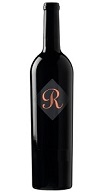 Exhibit A would be Jeff Runquist wines of Plymouth, California. This is a winery located off the beaten path in California’s Sierra Foothills. The owner/winemaker is Jeff Runquist, who specializes in small lots of sometimes esoteric wines (his Tannat was one of the highlights of the weekend in San Diego) that have been rocking the wine world. Exhibit A would be Jeff Runquist wines of Plymouth, California. This is a winery located off the beaten path in California’s Sierra Foothills. The owner/winemaker is Jeff Runquist, who specializes in small lots of sometimes esoteric wines (his Tannat was one of the highlights of the weekend in San Diego) that have been rocking the wine world.
Runquist entered 32 wines in the Winermaker Challenge and medaled with all but three. His winery was named Winery of the Year off that strong performance, but what’s interesting is that Runquist has done this before, and recently too. Two years ago, his winery was winery of the year at the San Francisco International wine competition, and last year it captured the same honor at the 2019 Critics Challenge (where the judges are prominent wine journalists) in San Diego.
 And before he embarked on his own family wine adventure in 1995, Runquist was winemaker at another top-notch family winery, the iconic J. Lohr. Owner Jerry Lohr was a pioneer in California’s Central Coast and his winery also made its mark at the 2020 Winemaker Challenge, bagging a couple of Platinum awards along with two Golds and four Silvers. And before he embarked on his own family wine adventure in 1995, Runquist was winemaker at another top-notch family winery, the iconic J. Lohr. Owner Jerry Lohr was a pioneer in California’s Central Coast and his winery also made its mark at the 2020 Winemaker Challenge, bagging a couple of Platinum awards along with two Golds and four Silvers.
 Another Central Coast family winery, Eberle, also has a strong presence at the Winemaker Challenge, taking seven medals from ten wines entered. Eberle hit a home run with its 2018 Mill Road Vineyard Viognier from Paso Robles, which took Best of Show white wine. Proprietor Gary Eberle opened his eponymous winery along Highway 46 in Paso Robles in 1979. At the time Paso Robles didn’t have its own AVA (American Viticultural Area) designation, but Eberle led the charge and an Eberle Cabernet Sauvignon became the first wine in the region to show the Paso Robles AVA on its label. Another Central Coast family winery, Eberle, also has a strong presence at the Winemaker Challenge, taking seven medals from ten wines entered. Eberle hit a home run with its 2018 Mill Road Vineyard Viognier from Paso Robles, which took Best of Show white wine. Proprietor Gary Eberle opened his eponymous winery along Highway 46 in Paso Robles in 1979. At the time Paso Robles didn’t have its own AVA (American Viticultural Area) designation, but Eberle led the charge and an Eberle Cabernet Sauvignon became the first wine in the region to show the Paso Robles AVA on its label.
 The cherry on top of the family winery train at Winemaker Challenge was provided by Mendocino County’s Navarro Vineyards. The small family owned, family run winery in the Anderson Valley submitted two dessert wines – 2018 Riesling Late Harvest Cluster Select and 2018 Gewurztraminer Late Harvest Cluster Select – that tied for Best of Show dessert wine. I can attest to the fact that both wines were stunning. But Navarro is hardly a one-trick pony. Overall the small Mendocino County winery took 13 medals, including the aforementioned Platinum awards and three Golds. The cherry on top of the family winery train at Winemaker Challenge was provided by Mendocino County’s Navarro Vineyards. The small family owned, family run winery in the Anderson Valley submitted two dessert wines – 2018 Riesling Late Harvest Cluster Select and 2018 Gewurztraminer Late Harvest Cluster Select – that tied for Best of Show dessert wine. I can attest to the fact that both wines were stunning. But Navarro is hardly a one-trick pony. Overall the small Mendocino County winery took 13 medals, including the aforementioned Platinum awards and three Golds.
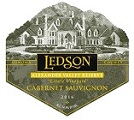
And, finally, Wine of the Year went to the 2016 Ledson Alexander Valley Reserve Cabernet Sauvignon. Yes, another family winery. I can only conclude the successful family winery is alive and well. Long live the families!
For complete results of the Winemaker Challenge International Wine Competition, including Best of Class awards, visit WinemakerChallenge.com.

Posted by Robert Whitley at 3:04 PM
|
|
 |
|